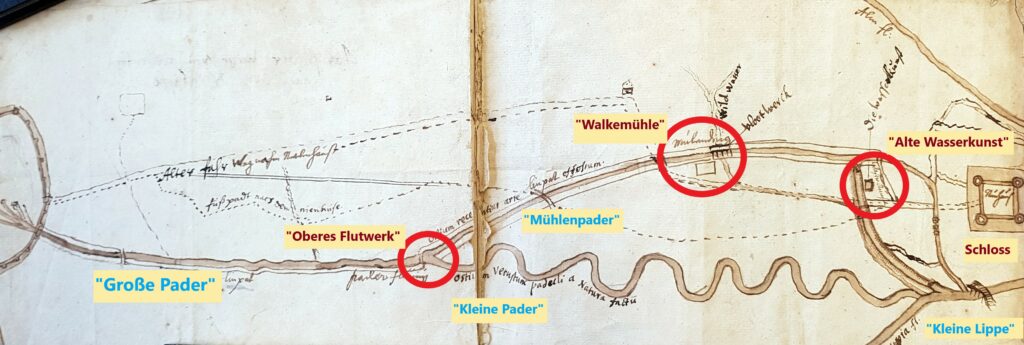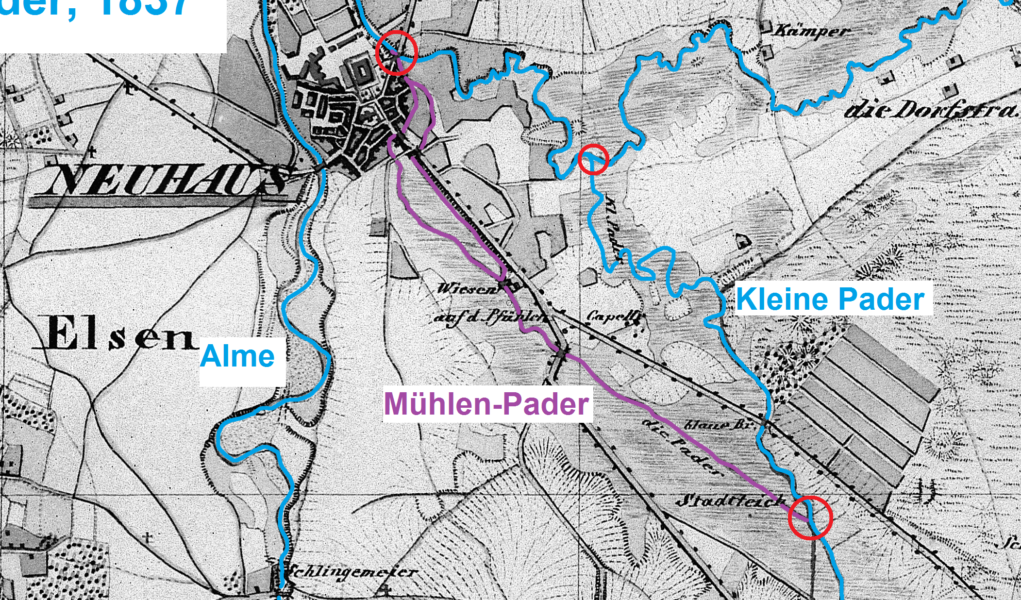The function of the old arms of the Pader as waterways cannot be proven beyond doubt historically. A look at one of the oldest field maps, the „Abriß der Wege von Paderborn nach dem Nienhuiße“ by Johannes Grothaus S. J. around 1680, illustrates the natural obstacles to making the Pader navigable:
Credit: „Jesuitenplan“ of the course of the Pader in the 17th century by J. Grothaus S. J., c. 1680 („Abriß der Wege von Paderborn nach dem Nienhuiße“, EAB Pb, AV, PA 123, fol. 15)




